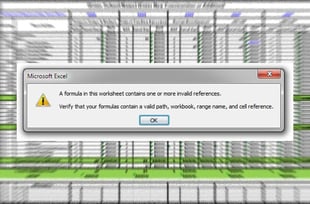3 Things New Estimators Need to Know
When you started your estimating career, what do you wish you had known? You probably didn’t expect to become an Excel wizard, performing magic with reports. And you also probably didn’t expect to answer so many questions that could have easily been resolved by just looking at the site drawings. Whatever the case may be, there’s a lot of aspects about preconstruction that have to be picked up on the fly because there isn’t much formalized training when it comes to estimating. Don’t get us wrong, learning on the job is a great way to learn. But there’s also a time and place for educational courses and mentorship.
Thanks to our friends over at Reddit, we were able to compile three answers to the question, “what should I know as a new estimator?” While these can’t take the place of an established training program at your own company or peer-to-peer mentorship, they’re great jumping off points.
- Develop strong relationships with trades/suppliers
- Learn how to read plans
- Utilize online learning courses like Udemy
Develop Strong Relationships with Trades/Suppliers
One repeated theme in this Reddit thread was the importance of relationships. Of course, one of the most important relationships you’ll develop as an estimator is the one with the trades and suppliers your team works with, from masonry to steel. Creating these types of relationships means you’ll understand who you can trust as a partner and subcontractor, as well as getting a better understanding of the data they send in. As Greg O’Bryan at The Beck Group so eloquently put it, “Estimating is an art”—and part of that art is gathering as much context as possible for the estimate that you’re building.
Learn How to Read Plans
 Another significant quality, and one that can quickly give you a leg-up as a new estimator, is the ability to read plans. This is one reason why people from the field are often preferred—they already know how to quickly read and analyze building plans.
Another significant quality, and one that can quickly give you a leg-up as a new estimator, is the ability to read plans. This is one reason why people from the field are often preferred—they already know how to quickly read and analyze building plans.
Being able to read plans is especially crucial to the success of an estimator because these plans—structural, mechanical, electrical, plumbing—are going to inform your estimate and help determine its accuracy, as well as whether or not your project can actually come in under budget. Frequently, estimators are handed plans that require $2 million worth of work when the budget only allows for $1.8 million, and it’s an estimator’s job to point out the discrepancy and see what can be done before the project gets too far along. Online learning courses such as LinkedIn Learning and Udemy offer classes on how to read various types of plans.
Utilize Online Courses Like Udemy
And speaking of Udemy, free online courses provided by platforms like theirs are a lifesaver if you’re just starting your preconstruction career. One user recommends taking Udemy’s “Microsoft Excel VBA (Visual Basic for Applications) Fundamentals,” which takes you through a crash course of how to manipulate data and reports in Excel. No matter what company you end up at or where you go in your career, you will see a LOT of Excel at some point in your job as an estimator, and the quicker you’re able to master it the quicker you’ll be able to advance from junior to senior roles.
Online courses are also a great way to supplement mentorship and may even provide you with questions that the course can’t or doesn’t answer, but that your mentor can.
Bonus Round
And last but certainly not least . . . “Buy a used AISC manual and use it as a pillow,” from user siliconpuncheon.

-1.png?width=112&height=112&name=image%20(4)-1.png)














